Every firm has that “job jar” of important projects that just never seem to reach peak priority for the limited resources available. These are exactly the projects that the GSCMI Center is interested in assisting you with.
If you are interested in partnering with the Center to complete a project with your company or to learn more, contact us at gscmi@purdue.edu.
2023
Analyze the state’s current permit system for overweight freight and its impact on Indiana’s road infrastructure and safety, with a focus on reviewing and improving the permit fee structure.
Tools that were used to do the project: PowerBI, Excel, Solver
List of students working on project
Spring
The project involves analyzing the state’s current permit system for overweight freight and its impact on Indiana’s road infrastructure and safety. The goal of the project is to understand the current permit fee structure the state has in place and review necessary changes to it by providing incentives for the major truck hauling companies.
Tools that were used to do the project: PowerBI, Excel, and Solver
Summer
Conduct thorough analysis and generate reports on key subjects such as Automation, Business Realignment, Supply Chain, and Workforce Imbalance, with the aim of transforming these reports into publishable papers.
Tools that were used to do the project: PowerBI, Excel, and Solver
List of students working on project
Summer
Implement heavy fleet routes and facilities locations optimization for winter operations, specifically snow plowing and road salting. This involves improving the existing route optimization algorithm, enhancing the user-friendliness of the tool, and determining the allocation of facilities to cover specific roads.
Tools that were used to do the project: Excel, Solver, PowerBI
List of students working on project
Spring
Implement heavy fleet routes and facilities locations optimization for winter operations, specifically snow plowing and road salting. This involves improving the existing route optimization algorithm, enhancing the user-friendliness of the tool, and determining the allocation of facilities to cover specific roads.
Tools that were used to do the project: Excel, Solver, PowerBI
List of students working on project
Summer
Establish and maintain an educational portal for WHIN company employees to boost knowledge and learning.
Tools that were used to do the project: MS Excel, MySQL Workbench, MS Access
Spring
Establish and maintain an educational portal for WHIN company employees to boost knowledge and learning.
Tools that were used to do the project: MS Excel, MySQL Workbench, MS Access
List of students working on project
Summer
Enhance and expand the existing supply chain tool and database provide comprehensive information on manufacturing companies.
Tools that were used to do the project: MS Excel, MySQL Workbench, Parsehub
List of students working on project
Summer
2022
Indiana is among the nation's leading states in auto manufacturing. They don’t plan to fall behind with the rise of EV production. Indiana is planning to be a top competitor in the EV manufacturing space by drawing investments from major auto manufacturers. While the major companies plan to invest in new and exciting technologies, smaller companies are going to be forced to adapt to the new environment or risk being left behind.
This report addresses the industry outlook for Indiana as EV production ramps up throughout the country. This report also analyzes the auto-related companies in Indiana and evaluates the risks that are posed to them based on the products that they are putting out. The report suggests that Indiana auto manufacturing is poised to be in a favorable position entering into the new age of auto manufacturing based off the analysis done by our research.
Three teams of students are working with three clients to create solutions for specific issues within each company.
Manufacturing Readiness Grants Program; This project will study the impact of the MRG program on the manufacturing ecosystem in Indiana and uncover relevant trends among the applications. This project is phase 2 with the next set of companies. The research is intended to identify digital transformation trends, company demographics, investment and use case trends, and other program data that may become apparent during analysis to assess the state-wide dynamics of transformation and program impact. The deliverables culminate in an analysis on the Manufacturing Readiness Grants program across Indiana, as well as an ‘analysis tool’ and strategies and/or recommendations that can enhance the program as it relates to Indiana’s manufacturing ecosystem. They specifically include: A detailed analysis of the program in the form of a report/whitepaper; An analytical tool to assess every application.
Utilize HS code-based data analysis of imports into the US through oceanic routes to help understand the current level of imports into Indiana and identify opportunities for reshoring and local supplier expansion in the transition to EV cars.
Tools that were used to do the project:Excel, Solver, PowerBI
List of students working on project
Summer
Utilize HS code-based data analysis of imports into the US through oceanic routes to help understand the current level of imports into Indiana and identify opportunities for reshoring and local supplier expansion in the transition to EV cars.
Tools that were used to do the project:Excel, Solver, PowerBI
List of students working on project
Fall
The project entails HS code-based data analysis of imports into the US through oceanic routes that help understand the current level of imports into Indiana. The analysis helps OEM companies to explore the possibility of having multiple suppliers by reshoring or finding alternate suppliers that are local to reduce the supply chain risks. Meanwhile it helps identify opportunities for supplier companies to expand/grow their business by supplying to companies that import from outside US. The analysis is also very important to realize manufacturing opportunities in transition of automobile industry from IC engine cars to EV cars.
“Where’s my stuff” This team is to develop product prototypes, in the guidance of industry experts, that may have practical values for deployment. The class will be charged to investigate two, possibly three local companies with different problems. They will need to figure out their specific needs and determine where are the common issues between these manufacturers and where are the differences. After these common issues have been identified they will investigate various existing technical and commercially available products on the market as possible solutions.
Construct a simulation model to investigate the benefits of additive manufacturing (AM) and determine the best ways for the Department of Defense (DOD) to utilize AM. The project involves formulating an AM supply chain and sustainment strategy, as well as a digital engineering strategy.
Tools that were used to do the project: Excel, AWS
List of students working on project
Summer
Construct a simulation model to investigate the benefits of additive manufacturing (AM) and determine the best ways for the Department of Defense (DOD) to utilize AM. The project involves formulating an AM supply chain and sustainment strategy, as well as a digital engineering strategy.
Tools that were used to do the project: Excel, AWS
List of students working on project
Fall
The project, in collaboration with the Department of Defense (DOD), is divided into several tasks, where Purdue University is responsible for Task 4. The goals of this task are to develop an additive manufacturing (AM) supply chain & sustainment strategy and a digital engineering strategy. The Daniels School team is tasked to develop a simulation model to investigate the benefits of AM and how it can be best used by DOD.
Analyze the state’s current permit system for overweight freight and its impact on Indiana’s road infrastructure and safety, with a focus on reviewing and improving the permit fee structure.
Tools that were used to do the project: PowerBI, Excel, and Solver
List of students working on project
Summer
Analyze the state’s current permit system for overweight freight and its impact on Indiana’s road infrastructure and safety, with a focus on reviewing and improving the permit fee structure.
Tools that were used to do the project: PowerBI, Excel, and Solver
List of students working on project
Fall
The project involves analyzing the state’s current permit system for overweight freight and it’s impact on Indiana’s road infrastructure and safety. The goal of the project is to understand the current permit fee structure state has in place and review necessary changes to it by providing incentives for the major truck hauling companies.
Generate long-term future forecasts of transportation demand conditions for people and freight, enabling INDOT to adjust its business practices, planning models, and investment decisions accordingly.
Tools that were used to do the project:PowerBI, Excel, Solver
List of students working on project
Summer
Analyze the economic effect of active transportation and the association of the healthcare industry with transportation, with the aim of identifying initiatives INDOT can undertake to make Indiana attractive to advanced industries, especially the healthcare industry.
Tools that were used to do the project:PowerBI, Excel, Solver
List of students working on project
Summer
Analyze the economic effect of active transportation and the association of the healthcare industry with transportation, with the aim of identifying initiatives INDOT can undertake to make Indiana attractive to advanced industries, especially the healthcare industry.
Tools that were used to do the project:PowerBI, Excel, Solver
List of students working on project
Fall
The project involves analyzing the economic effect of active transportation and association of healthcare industry with transportation. The project entails analyzing the relationship between access to active transportation (walking, bicycling, hiking, etc.) and the region’s economic viability in addition to how the overall transportation features impact the healthcare industry. The goal of the project being understanding what initiatives INDOT can take to make Indiana attractive to advanced industries especially the healthcare industry.
Develop and support a comprehensive supply chain portal for 10-county WHIN companies, ensuring up-to-date information and promoting increased portal usage.
Tools that were used to do the project: MS Excel, MySQL Workbench, MS Access
Summer
Develop and support a comprehensive supply chain portal for 10-county WHIN companies, ensuring up-to-date information and promoting increased portal usage.
Tools that were used to do the project: MS Excel, MySQL Workbench, MS Access
Fall
Development and support of supply chain portal for 10-county WHIN companies. This project will involve keeping updated the relevant information. In addition, the project aims to grow the usage of the portal.
Establish and maintain an educational portal for WHIN company employees to boost knowledge and learning.
Tools that were used to do the project: MS Excel, MySQL Workbench, MS Access
Fall
Development and support of educational portal for WHIN company employees to boost knowledge and learning that helps the individual and the company grow.
Enhance and expand the existing supply chain tool and database to provide comprehensive information on manufacturing companies.
Tools that were used to do the project: MS Excel, MySQL Workbench, Parsehub
List of students working on project
Summer
Enhance and expand the existing supply chain tool and database to provide comprehensive information on manufacturing companies.
Tools that were used to do the project: MS Excel, MySQL Workbench, Parsehub
List of students working on project
Fall
Expand the existing supply chain tool and the database to include all the 92 counties in the state. The database will include essential information about all the manufacturing companies in the state.
Data Analysis
2021

Supply-chain issues driven by pandemic factors exacerbated lack of management access to real-time information and control over component needs (inventory) on four corporate sites. The project soon focused in on an ERP solution Microsoft (MS) ‘Nav Dynamics’ supported by other MS apps. A financial implications model showed that the investment in a functional ERP system would increase corporate revenue and provide a very healthy (and short) Return on Investment advantage, as well as working to sustain the business and its competitive advantage position for future profitability.
Student Team: Adam English, Sankarsh Ramadas, Kenny Edouard, Bharat Punna

The project was set up to provide a Three-year, 2021-2021 marketing plan, in collaboration with leading corporate executives in the County in order to foster County growth and enhance the quality of life and economic vitality of businesses. With a low ‘Indiana Counties Livability Ranking’ at 68th out of 91 counties, the potential for improvement was clear. Key goals for impacting on improvement aims were addressed; these focused on 1). ca. doubling childcare capacity, 2). supporting an increase in residential housing, 3). striving to create investment of a new commercial development (including amenities to improve an underserved area of the county) and, 4). a plan to significantly improve and expand the County’s marketing and advertising channels in order to attract talent and so, fill many open job positions in the county.
Student Team: Brian Birdsall, Kayla Veeder, Ryan Melvin

Analyze the historical demand and inventory data in Demand Works Software to identify opportunities to reduce costs and improve customer satisfaction. Results:
Student Team: Guillermo Federico R Cerutti, Evgeniya Krasavina

Student Team: Kshitij Jain, Varun Anand, Saajan Shah
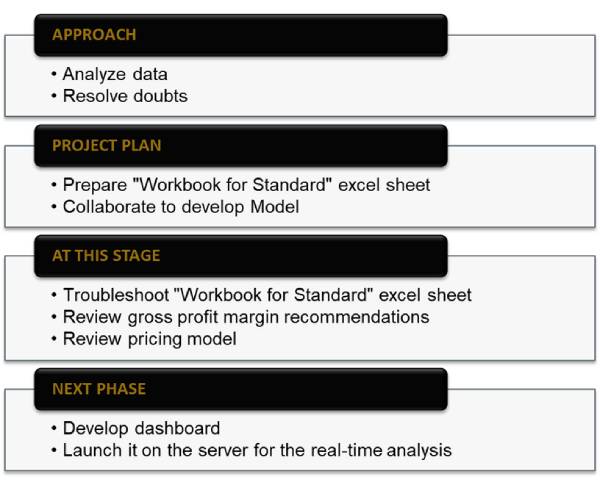
Ability to analyze our pricing easily, quickly for each item. Material price increases are occurring on every order. When costing and pricing data is extracted from the system, it is thousands of rows. We need the ability for a program to analyze the data and make the appropriate pricing suggestions. Once the pricing suggestions are approved, we will need it put in a txt delimited file to upload in our system.
Student Team: Jacob Halfhill, Kartik Maheshwari

The Wabash National AME Materials Engineering Group would like to commend Jacob Raspe and Hui Zeng for their excellent work over the Spring 2021 semester on our Plan For Every Part (PFEP) project. During this semester they accomplished the following,
Considering the obstacles of remote work and connectivity to WNC system, Hui and Jacob did an outstanding job. Their work benefited our group immensely by allowing us to focus on other activities related to this project. We are looking forward to working with the DCMME team again over the summer and hopefully into the fall semester.
Student Team: Hui Zeng, Jacob Raspe
Kirby Risk is a Tier 1 OEM supplier to organizations such as John Deere and Caterpillar. With an increasing EV market, the firm wants to strategically explore the EV charging station market for retail and commercial use to expand its current business operations. Kirby Risk has relationships with material suppliers, and the electrical and mechanical expertise to manufacture. Therefore, Kirby Risk has the reputation to become the main supplier of an EV charging station brand. Project objectives. Perform a market analysis of EV charging stations and/or batteries
Build a marketing plan based on research to identify potential EV Charging Station OEMs who need a Tier 1 Supplier of the charging unit.
The EV wave is coming and there may be opportunities in the EV Charging station assembly. The challenge is to do the research to find out who in in that space and potential partners.
Project scope included:
Include recommendations of suppliers to develop future partnership
Student Team: Alfred Carandang, Kristin Zalewski, Jason Farmer
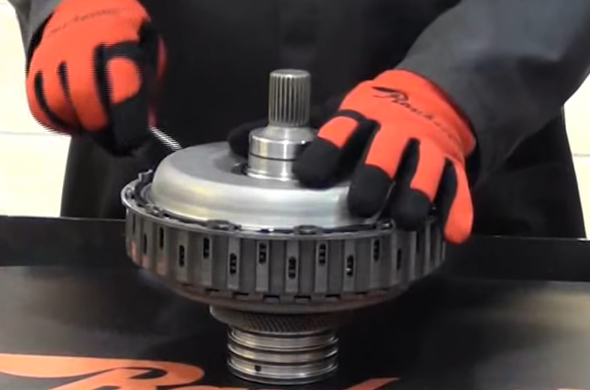
'Need all documentation on floor throughout plants to be verified being correct revision, update and proper location to match what is shown through our electronic log 'controlled documents'. If found to be incorrect, the logged information needs to be updated/corrected. If found to be using documents on the floor that are not within the electronic 'controlled document' system, it will need to be added to the 'controlled document' system to match. All forms must be reviewed on an annual basis. This is typically done by printing documents and physically signing them when reviewed and then stored in a binder until the next years review. This method does not 100% prevent undocumented changes or use of a previous version on the floor. In addition to ensuring the correct documents are being used, a student could help design a user-friendly e-system that will document and schedule annual form reviews and changes, and help transition to e-signature approval, e-document control, and e-use of these controlled documents on the shop floor.
Student Team: Kim Cahoon, Cherag Keswani, Colin Lee-Au
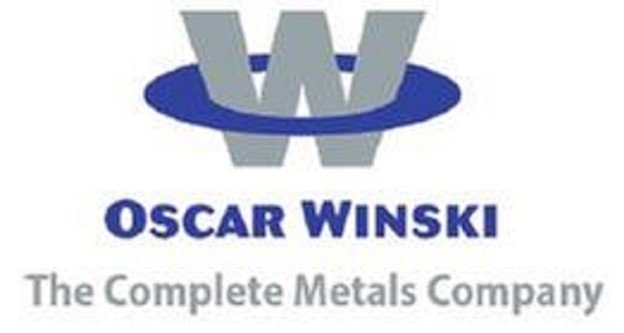
Analyze other companies in the area to identify companies that produce similar products.
Student Team: Jacob Halfhill, Kartik Maheshwari

Hardware for all products is pulled at a single standalone station with several Bins containing every type of hardware. Currently the hardware ticket is scanned than the computer shows the item numbers and quantities. The hardware puller goes to the proper bin, scans the bin and then selects the hardware, packages and labels. The goal of this project would be to develop a grid-based PLC system that lights up a LED light at the appropriate hardware bin combined with a weight scale that allows the computer to ensure the proper quantity of hardware has been pulled.
Student Team: Ethan Haeberle Grant Bolotin, Bora Schrom
2020

The research was conducted for Indiana Department of Transportation (INDOT) as part of a project to assess the potential benefits of constructing conduit infrastructure on right-of-way along state highways. The conduits would be leased to information and communication technology (ICT) companies for fiber-optic cables that expand broadband internet coverage in the state.
Student Team: Anuja Wangnoo, Karthik Sethuraman, Abrar Mohammed, Gopi Manthena

What would it take for an on-demand laundry service provider to be twice as fast as before, switching from a turnaround time of 48 hours to 24 hours?

Could rest areas in Indiana be upgraded to include electric vehicle charging stations, high-speed internet service, interactive touch screen displays and parking lot sensors?
Student Team: Dutt Thakkar, Andrew Colbert, Hannah Pratt
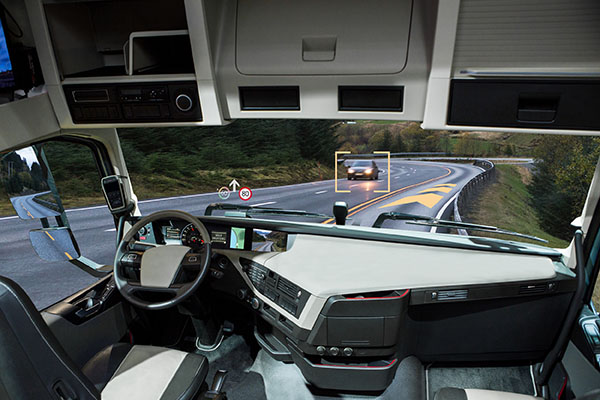
As self-driving or autonomous vehicles become more viable, Indiana Department of Transportation is making plans to accommodate them on its highways. It has collaborated with Purdue University on a study that shows the significant impact that autonomous vehicles could have on Indiana's transportation and manufacturing industries.
Student Team: Anmol Singh, Mihir Bhatia, Sazzadur Rahman

The company was wanting marketing data to assist management to form a developing business strategy more widely by investing in several large cities across the United States. The work led to inspiring engagements well ahead of published norms for cold-calling and data used at board-level to decide the investment strategy for one area of business.
Student Team: Kimberly Cahoon & Johanna King.

KA’s production flow involved cutting and preparation of raw materials by job number and placing all of the necessary materials on a cart(s) to be stored in a staging area for assembly. KA would identify the materials by writing the job number on a piece of cardboard place on each cart of material. The problem was that when assembly personnel came to the staging area looking for the next job for assembly, they were spending a great time of time looking for these carted materials, as sometimes there could be 30-40 carts of materials in the area. Purdue Students visited the site and then evaluated a variety of possible solutions, and later presented to KA management the group’s finding and reported on a commercially available and cost-effective technology solution to the problem.
Student Team: Yizhou (Zoe) Fang, Rushabh Gala, Sai Bhargav Nimmagadda, Dutt Thakkar
As self-driving or autonomous vehicles become more viable, Indiana Department of Transportation is making plans to accommodate them on its highways. It has collaborated with Purdue University on a study that shows the significant impact that autonomous vehicles could have on Indiana's transportation and manufacturing industries.
The study, entitled "Developing a Business Ecosystem around Autonomous Vehicle Infrastructure in Indiana," and led by Ananth Iyer and Steve Dunlop of Krannert School of Management, explored not just the benefits of having fleets of self-driving vehicles on the state's highways, but also the drawbacks, such as the loss of jobs for professional drivers. As part of the study, the researchers conducted a survey that showed the potential impact of new transportation technologies on Indiana companies.
Most companies responding to the survey expect autonomous vehicles to have a greater economic impact on them than platooning, electric vehicles and drones. Autonomous vehicles are expected to reduce crashes caused by human error by more than 90 percent, decrease commuting time and improve productivity, and be more energy efficient and sustainable. But autonomous vehicles would also be costly to implement, as current systems would need to be replaced. AVs would also make it harder to assign responsibility for crashes, increase cyber security risks, and require major changes at auto manufacturing plants.
To minimize the impact on driving professions, the study suggests a planned transition that would enable drivers to find other positions, taking advantage of the knowledge and skills they already possess. The study shows how platooning – linking two or more trucks in a convoy using connectivity technology and automated driving support systems – could significantly increase the capacity of highways.
At 55 miles per hour, five-vehicle and 10-vehicle platoons would increase capacity by 350 and 550 percent respectively. To realize the benefits of platooning and other techniques that exploit automated driving systems, highway administrators will need to explore designated lanes such as high-occupancy, managed and express lanes. Autonomous vehicles would improve Just-in-Time deliveries for a wide range of industries, reducing their transportation costs. The study expects shipping and logistics companies to adopt autonomous vehicles early, as they would benefit greatly from reduced labor costs.
Primary industries in Indiana that would benefit from autonomous vehicles include manufacturers such as Wabash National and Cummins, as well as transportation and logistics companies such as Schneider National and FedEx. Secondary industries are technology companies that could provide infrastructure and technology for implementing autonomous vehicles, such as Pelton and Delphi Technologies.
While preparing for autonomous vehicles, the study recommends that INDOT initiate projects to test connected vehicle (CV) technology such as dedicated short-range communications (DSRC) and 5G cellular technology. CVs communicate with other vehicles and can provide data to improve traffic flow. The study notes that autonomous vehicles will require substantial investments in infrastructure and may also cause losses in revenue from gas taxes, parking fees, traffic tickets. INDOT will need to explore a Vehicle Miles Travelled (VMT) fee and other potential revenue streams to make up for this.
For AV and CV to succeed, the study recommends that INDOT develop partnerships with a wide range of industries and communicate the benefits of these technologies. INDOT Study Shows Potential Impact of Autonomous Vehicles in Indiana 7 may need to act more like a mobility provider, in addition to being an infrastructure provider. INDOT could also partner with major research universities to create testing areas for autonomous vehicles and to train drivers to use AV technology.
2019

The primary objective of the Ohio River Bridges project was to develop a present value analysis by analyzing the funding structure of both INDOT and WVB partners to identify whether the P3 approach of DBFOM is profitable or not. The funding structure includes the toll revenue projection model (reflective of current traffic patterns), operations and maintenance cost of the bridges. We also did a comparative study of Ohio River bridges with other bridges that have similar features (physical, financial, design, policies, etc.).
Student Team: Gopi Manthena, Dutt Thakkar, Rohan Shah

The INDOT Shelter project (part 2) aimed at assessing the benefits of building different types of shelters for storing INDOT’s vehicles and other equipment and evaluating the expected ROI to build the shelter by developing a present value analysis. The scenarios (shelter/no shelter) were compared on a simulation developed on JaamSim.
Student Team: Dutt Thakkar, Naveed Lalani, Rohan Shah

The key objective of the WHIN Education project was to collect extensive data including employee information, location, skills and core competencies for 270 companies in the 10-county region of Indiana with the goal to develop smart people, smart processes and smart technologies through various resources.
WHIN Education has built a network of company representatives interested in providing research to develop a global epicenter for agriculture and next-generation manufacturing empowered by smart "Internet of Things" platforms. The team is in the early stages of company interviews and has spread the word through interactive group sessions and a WHIN launch event. In April, WHIN offered a pilot training session, where the team helped to address technology and education issues companies may be facing.
Student Team: Andrew Colbert, Hannah Pratt, Neelesh Prakash, Brandon Vallonio, Naveed Lalani, Dutt Thakkar, Mihir Bhatia

The WHIN Supply Chain Leakage project aims to solve the issue of the Supply Chain Leakage in the Wabash 10-county region by developing a web database that will allow companies to easily access information about each other and take advantage of products and services available within the region itself resulting in reduced supply chain leakage. The database is being populated with information from participating company websites that will serve as a directory.
Student Team: Anesh Krishna J N, Hemanth Devavarapu, Deepika Jindal, Nachiket Joshi

The key objective of the Advocate Healthcare project was to validate the standardized 2-bin system implemented by Advocate Health Care to manage the medical supplies inventory in the supply rooms aiming at space optimization, cost efficiency, and reduced product expiration.
Student Team: Brandon Vellario, Karthik Sethuraman, Dutt Thakkar, Abrar Mohammed
The OPEN CV People Tracking project focuses on the identification and tracking of all people in the engagement center. In this project, live video feed from cameras set up in the center was used as input. Open CV algorithm using tensorflow library identified and tracked people.
Student: Juilee Bhosale

The INDOT Autonomous Vehicle project aims to identify the global technological trends with the potential to transform logistics and transportation in industries and their expected overall economic impact. It also aims to analyze Indiana’s industrial landscape to identify key players adopting and driving these technologies and to understand their perception of these technologies. The team will map the impact of these technologies on INDOT’s future projects, decision-making processes, and identify key partners within the state.
Student Team: Anmol Singh, Mihir Bhatia, Sazzadur Rahman

In the OPEN CV Crowd Analysis project we will be leveraging video analytics to perform crowd analysis of visitors in a room. The objective of the project is to detect and count the number of people in a room every 15 minutes. Live feed and images from pre-installed cameras will be processed by the algorithm, providing us the number of people at that instance in the room.
Student: Jaideep Dutta

The INDOT Shelter project aimed at assessing the benefits of building different types of shelters for storing INDOT’s vehicles and other equipment and evaluating the expected ROI to build the shelter by developing a present value analysis. The scenarios (shelter/ no shelter) were compared on a simulation developed on JaamSim.
Student Team: Dutt Thakkar, Naveed Lalani, Rohan Shah
The European Union grant offered faculty, students and staff a great opportunity to work with Procter & Gamble (P&G) on projects that included business continuity planning with suppliers, manufacturing synchronization and container visibility optimization. Each of these projects was driven by detailed data and contracts and focused on generating quantitative estimates of the impact of optimizing the system and maximizing impact to the supply chain.
The Business Continuity project was led by Professor Gemma Berenguer. The simulation models for production were led by Professor Olga Senicheva. The manufacturing synchronization and container visibility projects were led by Professor Ananth Iyer. The goal of the synchronization effort was to produce all required orders on a weekly basis i.e., get to a goal of 100% weekly synchronization. But there were some key issues to consider, from differences in packaging to differences in formulation to line production constraints to forecast variability. In addition, there were setup times that had to be kept track of as production shifted across products. With intense collaboration with P&G managers, and data at a highly granular level, the team produced a mathematical model to optimize the system that permitted both 100% weekly synchronization as well as a close to 5% projected reduction in capacity required. The project provided a great learning experience and will appear in various forms in future years, from class exercises to cases to academic papers.
The container visibility project involved a visiting faculty member from Turkey, Professor Cagri Haksoz, and Ananth Iyer. They applied ideas from their past methodological papers to the estimation of the optimal way to use container visibility to improve the supply chain. Their results suggest that waiting to gather data so that it helps in the choice of contingent actions may be preferred to acting too early. Similarly, the decision of when to get this information may depend on how significant the cost of delay is to the system and how expensive the cost of taking corrective steps to remain on schedule. The container visibility project's results are expected to be used to understand the economics of different tracking schemes for global container flows.
The P&G Project with Professor Senichiva and Dr. Iyer was initiated to find efficiency gains in the production processes of washing pods manufactured by P&G. The project was divided into four phases: Data clean-up, data analysis, applying agile methodologies, and JaamSim (a simulation software). Data clean-up involved different types of data in various formats that was collected from P&G. Macros were then developed to extract relevant data in specific formats to be analyzed. Next, data analysis involved production logs being analyzed to find any trends or gaps in the production processes by checking production units, production time, and capacity utilization. Agile methodologies were then utilized to see if any changes in production processes could provide any efficiency gains. Finally, JaamSim was utilized throughout the project to visualize the production processes and find any improvements that could be made in the future.
Gemma’s group worked with P&G's laundry pod to accomplish a safety stock and inventory analysis for key components, a JaamSim model to visually and analytically simulate supply chain disruptions for different components, a business continuity and risk planning analysis for each supplier, and an optimization model to determine optimal production plans in a global context. The team began the project by looking at different components and identifying the most critical by delay impact, supplier risk, demand variability, and other factors. From there, we created a mathematical model to provide recommendations on optimal inventory levels. The next step was a model created in JammSim, a 3D graphic simulation tool, which visually showed how supply chain disruptions lead to manufacturing delays and the financial impact. This simulation model showed the importance of managing risk, which transitioned the project into the third stage. Here we created business continuity plans for each component. This involved conducting a risk analysis of the supplier, the substitutivity of the component, the criticality of the material, and other risk areas. We created a plan for each component of the laundry pods and areas that needs to be particularly monitored. The final part was an optimization model that pulled in data from other parts of the project which enabled us to create optimal production plans for day-to-day production as well as when disruptions occur.
P&G was struggling to synchronize its detergent pods production to meet its current demand. They planned to either make capital investments for expanding their production capacity or optimize their existing production. The latter has been explored as a project by P&G with DCMME to make a small yet effective investment towards this synchronization problem. Initially, the team had first identified bottlenecks in the production process and explored the WIP inventory implications as an effect of shifting the bottleneck to achieve continuous production. This provided uniform running of the production with the least number of changeovers. Later, a linear programming optimization model was created to generate weekly production schedules such that, inclusive of all the changeover times, the total duration of production was minimized. The model created is being cross validated with different line loading scenarios to come to the most optimal solution to this production issue.
2018

The INDOT Shelter project involves evaluating INDOT's expected return on investment to create covered areas for equipment (vehicles and other assets) and identify alternative ways to create covers for equipment and all the associated costs. Currently, we are collecting data on INDOT's equipment from publicly available records. Using the data, we intend to calculate the payback period of the equipment and compare it to the cost of constructing shelters. Furthermore, the team plans to project the impact of enclosures on equipment maintenance cost and performance, develop management strategies for equipment need and usage across districts and impact, and benchmark districts against each other to understand best practice. Lastly, the team plans to adjust management incentives to solve the agency problem. At the end of the project, the team presented their findings to INDOT and made recommendations based on the analytical and financial analysis done above.
Student Team:Dutt Thakkar, Naveed Lalani,Rohan Shah

This project is an after-action review of the overall profitability and success of the collaborative effort of Indiana and Kentucky in developing the Ohio River Bridges Project. Indiana decided to fund its portion of the project by utilizing a Public-Private Partnership, or P3, approach with WVB Partners. There are multiple forms of P3 structures; the Ohio River Bridges Project is Design-Build-Finance-Operate-Maintain (DBFOM) in which the private entity is responsible for the entire construction of the bridge, financing the costs, as well as operating and maintaining the bridge over a specified period of time. The primary benefits of utilizing this option are improved life-cycle costs, improved timeline, and reduction of risk and liability. The team has worked to research and develop a present value analysis of the project by analyzing the funding structure of both INDOT and WVB Partners. They created a toll revenue projection model reflective of current traffic patterns that they also integrated into the overall funding structure. Currently the team is working to create a model to predict the operations and maintenance cost of all bridges involved in the project. Upon completion they will utilize this model in their comparison of the profitability of each party involved in order to quantify the gain or loss seen by INDOT by implementing the P3 structure. This project will move onto analyzing the economic impact and other additional factors affecting the overall evaluation of the bridges’ profitability.
Student Team: Gopi Manthena, Dutt Thakkar, Rohan Shah
2017
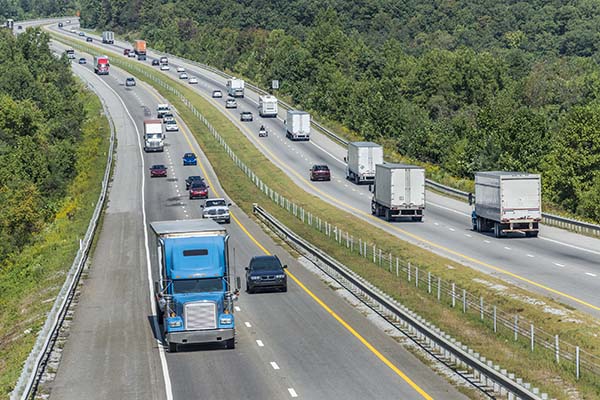
In the INDOT Economic Development project, the project work is progressing as per the schedule and the team has completed mapping of I-65 and I-70. The mapping includes gas stations, restaurants, rest areas, emergency shelters, truck parking spaces and motels. Moreover, progress has been made on completing the same for I-64 to I-94. Data comparing Federal vs. State owned roads has been compiled. Data on green space from the state tax department has been acquired that will be the base for filtering out state owned green space. This project is in its early stages, and much more data will be compiled in the future.

Advocate Health Care, a leading healthcare services provider in Illinois, has 10 Medical centers where it wanted to reduce inventory costs and associated expenses in addition to eliminating expired product count. This task was challenging because of the necessity of these products for an individual in a hospital and due to the high costs associated with these medical products. Optimizing the inventory levels for improved efficiency and effective cost management proved to be one of the most important focus points for Advocate.
The initial approach was to establish and implement a durable Requisition Infrastructure and improve the receiving processes by adopting Standard Operating Procedures (SOPs) for receiving the inbound freight and standardizing the receipt verification process. As this gave a better understanding of how the flow should be initiated, the team moved over to redesign the layout of the dock to accommodate the recommended changes. They used AutoCAD and SketchUp extensively to render and create 2D and 3D drawings of the layout for four critical centers and ran simulations in JaamSim to predict the improved turnover times. The main objective to was to implement and improve metrics at the four critical centers first and then do a site-by-site analysis to suggest changes depending on the current state of the center.
The project team also leveraged a lot of available data to gain insights and make better decisions with respect to the inventory reorder points and quantity. The project team was comprised of individuals from Industrial Engineering, Global Supply Chain Management, Data Analytics and Business Management majors.
2016

Background information: Zojila is a company that focuses on home products – it designs, outsources manufacturing, holds inventory and uses a combination of direct shipment and ecommerce vendors to satisfy demand. It is a small business located in Lafayette, Indiana. Based on discussions with the CEO, various specific questions have been identified that will be addressed by the proposed inventory planning system.
Goal: Develop an inventory planning system for Zojila to enable inventory planning i.e., triggering orders, revising to forecasts, adjusting to supplier changes, kitting, etc. Such an inventory planning system will enable proactive inventory management that can enable growth for Zojila. All solutions developed will be implemented and used by Zojila and be driven by the specific products and supply chains used by Zojila.

This client is looking to expand their industrial services and are working to align themselves with the Employment First initiatives that are being implemented across the U.S. The client is also seeking to increase and diversify its revenues to become less dependent on state and federal funding. JRDS would like to expand their contract packaging activities and develop advanced capabilities to do more than just manual hand-packaging work, mainly to improve the marketability of their services and to provide a higher level of technical training to their employees. JDRS is specifically looking for assistance with market research and business/marketing planning.

Premier Auto Detailing was established in 2003, and is a local car wash and detailing facility located in Lafayette, Indiana. Premier Auto Detailing services both local businesses and the greater Lafayette community. Premier Auto Detailing partnered with the Dauch Center to obtain an improved understanding of their current financial situation and to obtain innovative ways to improve their current operational processes. The financial analysis intended to guide management from Premier Auto Detailing to identify potential problems in their accounting and managerial systems, and the process improvement analysis was intended to find areas of improvement within their operational processes as well as to address any issues that their management team brought up. Multiple cost saving and process improvements were recommended to Premier Auto Detailing, including reducing their number of magazine subscriptions, imposing caps on some of their monthly expenses, implementing a vehicle classification system, and including a web based self check-in on their website. If Premier Auto Detailing implements some of these recommendations, we believe that they will see direct benefits from these cost saving and process improvement measures. This will be an ongoing collaboration between Premier Auto Detailing and the Dauch Center.
Student Team: Joey Meisberger, Taylor Haws, Matt Jung, Gisela Condado, Pablo Martinez, Akshit Bajpai
Advisor: Steven Dunlop
2015

Students from the Fall 2014 Experiential Learning course in Operations Management analyzed various transportation options for inbound shipments to Caterpillar’s Lafayette location. The team developed an algorithm to find the volume breakpoint for rail transportation from each key supplier and further investigated both the feasibility and environmental impact of rail transportation.
Student Team: Xinlan Fang, Priyanka Govindraj, Luojing Liu, Yunyang Liu, Junchao Yang
Faculty Advisor: Amy David
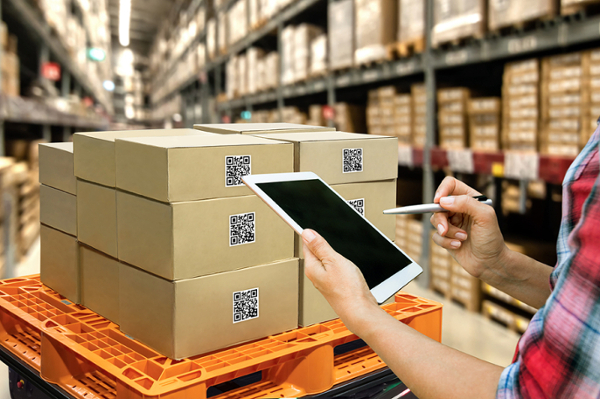
The student team was tasked with improving lead times for finished goods in the “accessories” category. The team first analyzed the product chains to identify components with long lead times, prioritizing those with the largest dependent demand quantities. They then recommended inventory policy and sourcing changes to alleviate the issues identified.
Student Team: Leo Fu, Dongfang Wu, Jennifer Lu, Yang Liu
Faculty Advisor: Amy David